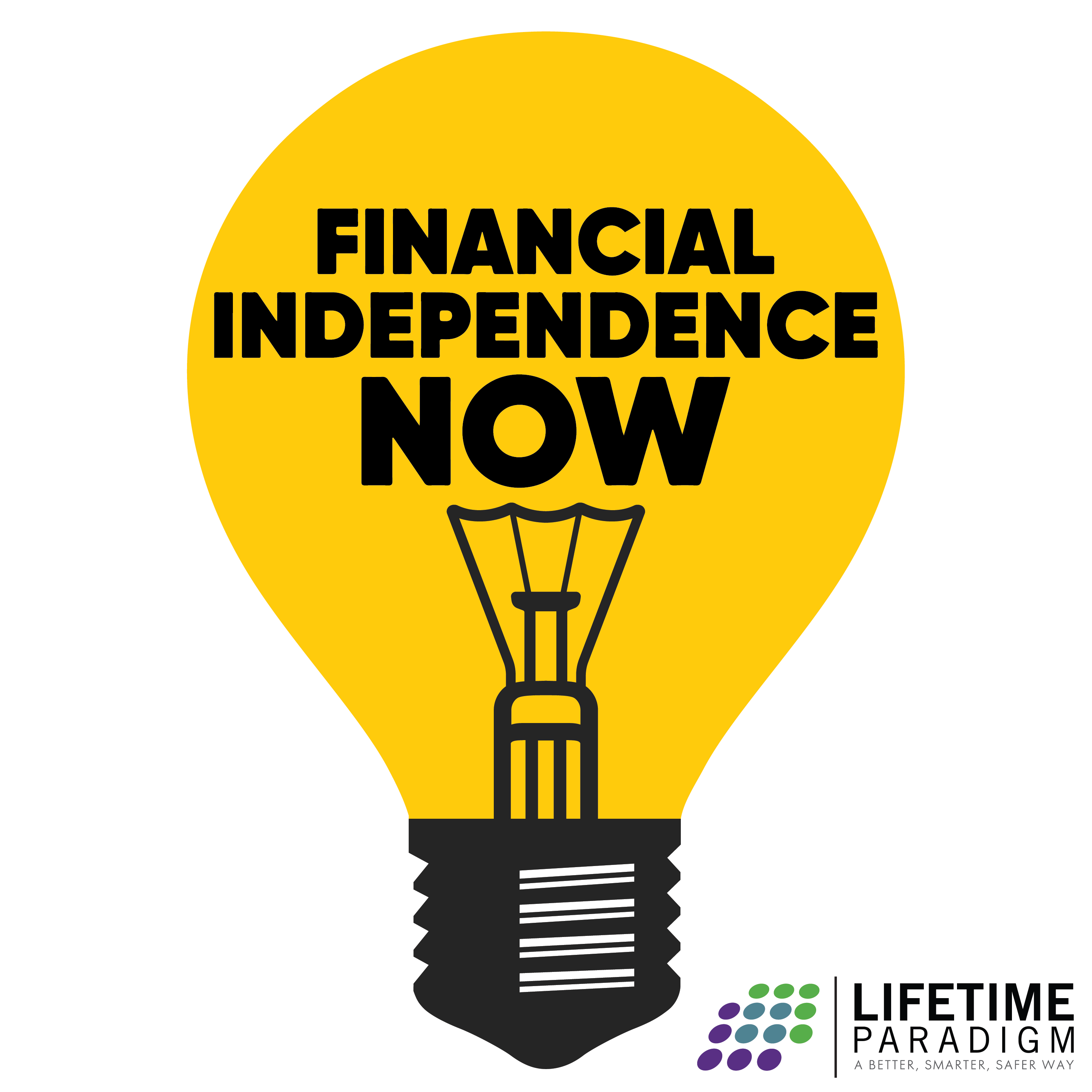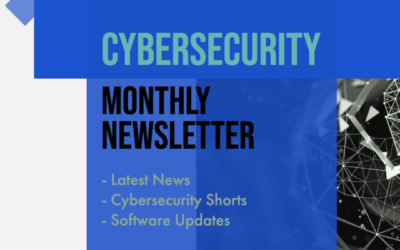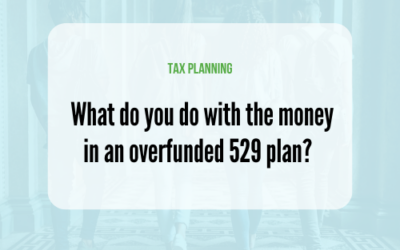The Financial Independence Now Podcast
Hosted by Randy Luebke
EP 0011. Budgeting for Dummies
In this episode of Financial Independence Now, host Randy Luebke dives into one of the most crucial yet challenging aspects of financial planning – budgeting. Randy introduces a practical strategy to simplify the process, the “false scarcity” method and categorizing expenses into essentials and lifestyle.
Listen in as Randy breaks down essential expenses into six categories: food, shelter, clothing, healthcare, transportation, and taxes, and explains how to track and manage these effectively. He also shares insights on setting aside savings and managing payroll taxes, making budgeting manageable even for those who find it daunting.
Whether you’re struggling to keep your finances in check or looking for ways to optimize your spending and savings, this episode offers valuable tips and a straightforward approach to help you gain control over your budget and move closer to financial independence.
Episode Highlights:
- The challenges of budgeting and how to overcome them
- The “false scarcity” method explained
- Differentiating between essential and lifestyle expenses
- Practical steps to start budgeting effectively
- The 20-30-50 rule for savings, taxes, and spending
Tune in and take the first step towards a more organized and stress-free financial life.
Links from the Episode:
The 4×4 Financial Independence Plan ℠
The Smart 3-Tiered Cash-Reserve System ℠
The Business Owner’s Guide to Financial Freedom: What Wall Street Isn’t Telling You

Get Your Copy
The “Budgeting for Dummies” Worksheet
Questions:
If you have any comments or questions about this episode, we would love to hear from you. Email us at [email protected] or connect with us on Facebook https://www.facebook.com/groups/financialindependencenowpodcast
Learn More:
https://lifetimeparadigm.com/education/financial-edification/
Support
We hope you enjoy listening to this episode and learn something that you can apply to your life starting now. If you’re finding value in this episode, please share it with a friend! Let your podcast streaming host, iTunes, or whichever streaming service you use, know that you appreciated the insights we shared. Don’t forget to give us a 5-Star rating, helping us connect with more like-minded individuals.
If you have any comments or questions about this episode, we would love to hear from you. Reach out to us via email at [email protected] or connect with us on Facebook at https://www.facebook.com/groups/financialindependencenowpodcast.
Also, remember to visit our website LifetimeParadigm.com. There, you’ll find links to our past podcast episodes, webinars, and educational articles. Stay updated on our upcoming events, both live and online. All the information is 100% free and available to you 24/7.
Lastly, make sure to subscribe to our newsletters, packed with fantastic ideas on saving and investing, reducing taxes, protecting yourself from lawsuits, and, of course, more insights on achieving Financial Independence, Now!

Transcript
When do you want to start living the life you dream of? A less stressful and a more fulfilling life? How about now? Welcome to the Financial Independence Now podcast. Financial Independence, when the assets you have provides the income you need, to live the life you want, and, work is no longer a requirement, it’s an option. Hi, my name is Randy Luebke, and I am the president and founder of Lifetime Paradigm, a financial consulting, planning and advisory firm, and, of course, the creator and host of this podcast, Financial Independence Now. I always begin my podcast by saying congratulations to you, our listeners, for making the decision to invest your time today. And we promise to make this investment into you every time you listen in.
Well, today we’re going to talk about one of my other favorite topics, the B word. Yep, we’re going to talk about budgeting.
You know, budgeting is a necessary and critical part of financial planning, but the reality is that most people struggle with it. It’s not fun. It’s a hassle, and it’s not easy because there’s so much detail that can be involved in it. It’s kind of like dieting. Everybody knows it’s good to keep your weight down, everybody wants to lose weight, but the truth is that they start out with good intentions and then they give up because it’s just too hard.
So in one of our previous episodes, we talked about the idea of discipline versus desire and how discipline is something that will work for the short term, but it’s definitely not going to hold out through a long-term effort. Budgeting is definitely a long-term effort. So in fact, you think about it, Dave Ramsey, he’s created entire business based on this whole idea of budgeting. And getting rid of debt. So we’re going to throw you a lifeline today. We’re going to talk about what I like to call “Budgeting for Dummies.”
Now, no one’s suggesting that you’re dummy, of course. And it’s just that for all the reasons I’ve mentioned, budgeting is not going to happen for most people. And it needs to happen. We do that by presenting this in two different levels.
Level 1 we call “false scarcity.” And level 2, it’s “categorization,” between essential and lifestyle expenses.
So, starting with Dave again, Dave likes to buy, as he says, give every penny a job. What he means by that, he wants to assign every dollar, every penny, to something that it’s either being spent or saved. And he wants to track every penny. And it’s an awesome idea. The problem is it’s just about impossible for most people. We/you have multiple bills, you have mortgages, and utility payments, and telephone payments and then we have credit cards. Multiple credit cards. And some bills, of course come monthly, some come quarterly, some only (come) annually. And heaven forbid if you try to pay for anything in cash and track that, that just is. Well, it’s impossible.
I know in the old days they used to suggest putting your money in envelopes, which again in the cash economy worked okay. You could put some money in for your rent and for your telephone bill and for gas and as you needed to buy those things, you’d go to the envelope, take the money out, and if it was gone, you know, you went over your budget. But it’s just not practical today. Nobody uses cash for, for all intents and purposes.
I’ve personally tried worksheets and spreadsheets along with many others, and failed, right. Even credit cards – you know, the credit card companies create these automated categorization of your expenses, but inevitably they’re wrong most of the time. And so then, if you want to go back and correct that, you end up spending a lot of time doing that.
There’s software you can get. Again, it’s a hassle. It’s difficult. It can be expensive. And for those of you who are self-employed, I mean you have variations in income and expenses. It’s just again, it’s difficult, it’s challenging.
So today we’re going to stop the madness and we’re going to start by presenting you with a strategy called “false scarcity.”
Now, I talked about the strategy in my book “The Entrepreneurs Guide to Financial Freedom.” And please, if you haven’t already, pick up a copy at your favorite book provider. And it is available in audio version, for those of you that like that Kindle too, right?
But anyway, it’s also part of the 3-Tiered Cash Reserve System, and we’ll talk more about the 3-Tiered Cash Reserve System another day. But it really works pretty simple. Most people get paid, and then they deposit the money into a checking account. They then pay their bills, and then, they save and invest the rest. And “maybe”, I should say, save and invest the rest.
So with the 3-Tiered Cash Reserve System, we’re going to reverse that. We’re going to deposit the money into our savings account and we’re going to transfer just enough money into our checking account to pay our bills. And the third bucket, by the way, the third tier of the Cash Reserve System is reserves, which again we’ll talk about on another day. But with this three-bucket system and by depositing your money into the checking account and transferring just enough to savings, we have a system where we created false scarcity.
So, I like to think of an analogy of like driving a car with two gas tanks. You fill the spare tank, right? And you transfer gas from that spare tank into the main tank and then you drive around, all month long. And at the end of the month, ideally, you’re going to pull into the gas station on fumes, right? You’ve used up all your gas, or again, going back on the analogy, you’ve spent all your money. Now you may find yourself falling short, right? And you run out of gas in the middle of the month. So what do you do? You refill, right?
You refill from your spare tank and then next month put a little more in your main tank and see if you can drive around all month and not run out of gas.
This creates, again, this sense of false security. We’re only spending the amount of money that we have to spend, right. The side benefit of this, by the way, is your savings account is going to automatically grow and that’s a pretty nice side effect, right.
So, it’s that simple. I mean any dummy can do it. You don’t need any spreadsheets. You don’t need any software and you don’t need any discipline. You just need to #1 change where you deposit your paychecks and #2 transfer the portion of your paychecks into your checking account, and then you’re done. After two or three months of making some adjustments, maybe bigger deposits or smaller deposits. You pretty much going to be done.
When an emergency happens, what do you do? Well, you pay for it. And guess what? You have money in your savings accounts to do that.
Now let’s take this to the next level, categorizing.
So, you know some people use Quicken or QuickBooks to track all their expenses, and they make categorizing pretty much automatic and it works and you can adjust it pretty easily and it’s very good for tax purposes. I’ll talk about that more in another day. But for your personal budget, again Budgeting for Dummies, we’re going to make it even simpler because there’s only two categories that you need to worry about. There are your essential expenses and your lifestyle expenses. That’s it.
Now in this category of “Essential expenses”, there’s going to be 6 subcategories. I’m going to read them off to you, and then we’re going to drill back down on each one of them.
You have food, shelter, clothing, and you have healthcare, transportation, and taxes.
So, food, shelter and clothing, obviously been around for a long time, but over the years as a financial planner, I realize that you also have the budget for healthcare expenses, transportation expenses, and taxes. Why? Because they’re ongoing, right? They’re always going to be there. So, we need to budget for them.
So drilling down further. #1 Food, all the money you spend in groceries and dining out. Really simply, if you’re going to eat it, it’s food. Simple.
#2 Shelter. If you’re renting, you’re talking about the rent you’re paying, plus insurance and utilities. So rent, insurance and utilities. If you own your own home, it would be your mortgage, instead of the rent, plus your insurance and utilities. Plus, you also need to budget for maintenance and gardening, right? Things that are going to happen monthly and on a regular basis.
Not home improvements, by the way. I’m not talking about buying new televisions or doing room additions. I’m talking about the regular monthly maintenance and gardening that’s associated with you owning your home.
#3 clothing. And I’m also going to bolt onto that personal care – so, getting your hair done and nails, that kind of stuff. The things that we need to do every month to take care of ourselves are relative to clothing.
#4 Healthcare, again, pretty simple. You have insurance, right? But you also have your deductibles and co-pays. Now the deductibles and co-pays, of course, are going to vary again from month-to-month. Hopefully you won’t have any, won’t have any need for them, but if you do, you’ll have the extra money in your savings account. So at least budget for the insurance and then maybe set aside a little more for the deductibles and co-pays.
#5 Transportations. If you have a car payment, you’re going to budget for that until you pay it down to zero. Again, we’re always advocating for not having any car payments – no leases, own your car, and if you have leases, remember you’re renting your car and then you definitely have to put that it into your budget. But gas and maintenance.
And you don’t have to worry about replacing the car. Why? Because the replacement cost to your car will automatically be captured in your savings account as well. So, under transportation, our payments still are zero, gas, and maintenance.
#6 And then finally, taxes. For those of you who are employed, that’s really simple. You can set up a payroll withdrawal. Your employer is already doing this and that will create that scarcity, right? Because you’re saving automatically for your taxes through your payroll withdrawal.
So pretty simple. 6 categories. We drilled down a little on each one of them. And so now I want to take it to the next level, right. And I want to start to look at what I’m actually spending on those categories and what’s the easiest way to get started with that?
Well, look backwards. Don’t try to do this today and look forward. I mean you’re going to start doing it today and looking forward. But what I want you to do is look backwards, for a three-to-six-month period. That’s all you need to do. So, get out all your credit card statements, all of them. If you use two or three of them, then get out all those statements and look back all those statements. Then just go down it, item-by-item, and you can mark it with an “E” for essential or “L” for lifestyle, if you want to. Or just “E”, if you want to, and everything you don’t mark as an “L”, right?
If it’s food, shelter, clothing, healthcare, transportation, you’re going to mark it at “E” and you’re going to then total those up. You can even do it in your head. Doesn’t have to be accurate to the penny. You don’t need to use a calculator per say. You just want to get a general sense of what you’re spending every month on your credit cards on these essential expenses. And they do the same thing with your checking account. And remember, it’s critical that you pay all your bills, “all your bills”, all your credit cards, your utilities, your mortgages, your rent, whatever you have, from one checking account to make it easy to track.
(Remember) We’re not talking about business expenses. We’re talking about personal, right?
So again, in review, “essential”, we have 6 categories. We have food, shelter, clothing, healthcare, transportation and taxes. Everything else is lifestyle. Recreation and entertainment. When you go to the movies. If you go traveling. If you’re a member of clubs. Whatever else you do that isn’t part of those six, it’s lifestyle, right.
Essential expenses are things that you must have. Lifestyle expenses are things that you want to have.
Essential expenses are things that you must do. Lifestyle experiences are things that you want to do. It’s really that simple.
So, start with false scarcity. Then evolve and transition up to the two categories, noting what you’re spending on your essential expenses and recognizing everything else as a lifestyle expense, and then start drilling down and evolving into the six subcategories of the essential expenses to determine whatever those are.
So hopefully that’s helpful. But now I’m going to give you some even broader strokes to help get you started with the process.
Remember these numbers 20, 30 and 50.
So 20 is 20%. That’s what you want to set aside for yourself, for savings. Remember the adage, pay yourself first? So you want to deposit 20% of what you earned into your savings account and the rest you transfer. Well, excuse me, you deposit 100% of your net paycheck into your savings account and you transfer what you need to spend into your checking. That’s how you’re going get your savings account built up.
30% is going to go to payroll, and again, payroll tax is easy to set up through your employer on your W2. But remember if you’re self-employed, especially if you’re a corporation or an LLC, paying yourself as a corporation, you’re wearing two hats, so you’re going to have a W2 which you’re going to treat yourself like any other W2 employee and set aside your payroll taxes, but you’re also going to need to set aside money that will end up on your K1, your profits, and make quarterly deposits for that.
So you want to budget for that at the business side and then again on the personal side, just take 30% out of your payroll. And that gives you 50% to spend, 20% for savings, 30% for taxes, 50% for spending.
Now here’s a pro tip, right. So the payroll deduction is simple, right? You can look at what you’re earning and then set aside 30% through deductions. So that part of it will be done for you.
The rest of the money, the 100% of the rest of the money is going to deposit it into your savings. And now, here’s the pro tip, you just transfer 70% of what you put into savings into your checking account to cover your expenses.
To save that again. You set up payroll deductions on your W2 for 30%, to cover your 30% for taxes. 100% of the rest goes in your savings and you take 70% of what’s in savings and send that over to your checking account to pay your bills. They might be asking yourself, why 70%?
Well, if you take the 50% that you’re supposed to be spending on bills and add that to the 20% of savings, that’s 70% and we’re going to take 50% of that 70%, and that’s what we’re actually going to spend on bills, right? And if you take 50 and divide it by 70. It’s going to be about 70%. So again, keep it simple. 30% out of your paycheck goes to payroll taxes. 100% of the rest of the money goes into your savings account. 70% of that gets transferred over to checking. And that’s the gas you get to drive around on for the month.
So. Let’s summarize. Budgeting sucks, but it’s got to be done. Most people won’t do it even though you have to do it, right? So, implement the Budgeting for Dummies process – 30% of your earnings are going to be withheld for taxes, 100% of the remaining money is going to go into savings, 70% of the money that goes into savings transfer it into checking, and then just drive around and hope that you come in at the end of the month on fumes. And again if you run short, transfer a little more to savings, I mean from savings to checking, and if you come a little bit over you compare it back and what will happen is you’ll be a much better budgeter it won’t take a lot of effort and eventually you’re going to work your way into categories where you’re going to determine the difference between what you’re spending on essential expenses versus lifestyle expenses.
Remember the essential expenses are six of them, food, shelter, clothing, healthcare, transportation and taxes. Lifestyle is everything else. Again, just keep it simple. Follow these steps get started today and you’re on your way to your Financial Independence Day.
So that’s it for today. We trust that you learned something from today’s podcast. Equally important, in fact, maybe even more important, we hope that you will do something with the information you have learned. Remember, life’s a journey and not a destination. Enjoy the trip along the way. Take a look at your life today from a new point of view, a new paradigm, a paradigm where you are living, the life you dream of starting, right now. We look forward to you joining us on our next episode of Financial Independence Now.
And in the meantime, please tell your podcast streaming host, iTunes or whomever you choose to listen to our podcast through. Tell them that you enjoyed what you heard and you valued the information we shared. Give us your five-star rating to help us grow our audience so we can connect with more people and helped them every day. Also, remember to visit our website, lifetime paradigm.com. There, you’ll find links to our past podcast episodes, webinars, and educational materials, all 100% free and available to you 24/7. You’ll also find notices of our upcoming events, both live and over the internet. And finally, be sure to subscribe to our newsletters, which are full of great information, ideas on how to save and invest, to reduce the taxes you pay, to protect you from lawsuits. And of course, even more ways to become financially independent. Well, that’s it for today. This is your house, Randy Luebke, signing off.
SERVICES WE OFFER RELATED TO THIS TOPIC
The information contained in this post is for general use and educational purposes only. However, we do offer specific services to our clients to help them implement the strategies mentioned above. For specific information and to determine if these services may be a good fit for you, please select any of the services listed below.
The 4x4 Financial Independence Plan ℠
The Smart Tax Minimizer ℠ (For Consumers & Home-Based Businesses)
The Smart Tax Planning System for Business Owners ℠
Tax Planning
Coaching and Consulting
Cybersecurity Monthly Newsletter June 2024
Asset Protection In this issue: Microsoft Recall Feature Raising Security Concerns Cybersecurity Shorts Software...
Tax Rules for Providing Free Meals and/or Lodging to Employees
Tax Planning Bradford Tax Institute Here’s the good news: Section 119 of our beloved Internal Revenue Code allows your...
Did You Overfund a Section 529 Plan? Consider a Roth IRA Rollover
Tax Planning Bradford Tax Institute Have you established, or are you considering, a Section 529 savings plan for a...






